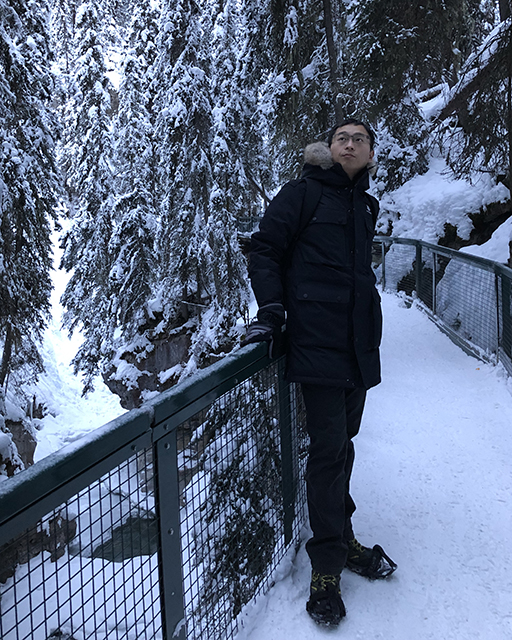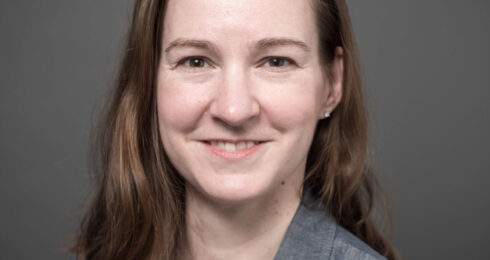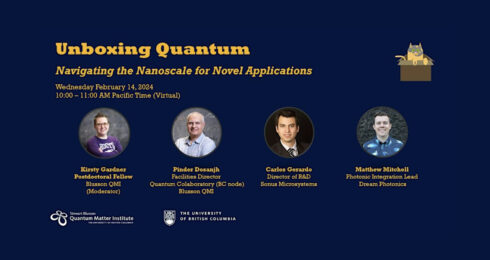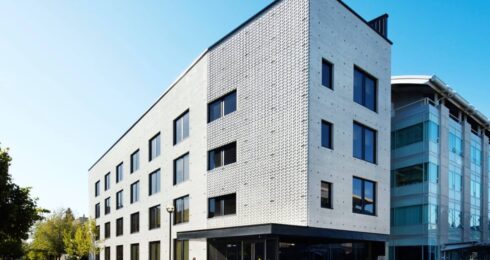New theoretical work conducted under the banner of the Max Planck-UBC-UTokyo Center for Quantum Materials demonstrates that a material known for its broken continuous symmetry changes its physics under pulsing light, and in its new form offers potential as a novel type of material with nontrivial topology in the nonequilibrium regime. Put simply, researchers have proposed an approach to materials design that offers the flexibility to re-engineer materials between states in order to incorporate new and desirable properties.
The research, published recently in Phys. Rev. B, emerged from an international collaboration between researchers at the Max Planck Institute for Solid State Research (Max Planck), The University of British Columbia (UBC), and The University of Tokyo (UTokyo).

Pictured: Xiao-Xiao Zhang, formerly a Blusson QMI postdoctoral fellow on Marcel Franz’s team. Zhang studied at Blusson QMI from September 2018 to October 2020.
Xiao-Xiao Zhang, first author, was a postdoctoral fellow at the Stewart Blusson Quantum Matter Institute under the supervision of Marcel Franz, Professor in UBC’s Department of Physics and Astronomy, when he met Dirk Manske (Max Planck) in 2019. Zhang had been nurturing an interest in nonequilibrium states, currently a hot topic in condensed matter physics, and was looking for his next steps when he connected with researchers at Max Planck and UTokyo.
“These are places with a high degree of expertise in the area of nonequilibrium, and the work they are doing is of broad interest,” said Zhang.
CQM enables trilateral cooperation across three continents
The work is a direct result of the collaboration enabled by the Max Planck-UBC-UTokyo Center for Quantum Materials (CQM). A major goal of the partnership is to facilitate opportunities for career growth for graduate students, postdoctoral fellows, and early career researchers. In Zhang’s case, the opportunity to explore a new area of expertise was made possible due to the trilateral network of researchers whose strengths are complementary across the field of quantum materials and technology.
“I was at an interesting place in my work; my first major project with Marcel had largely concluded when Dirk contacted me to suggest we explore some new topics in connection with researchers at Max Planck and UTokyo,” said Zhang. “I began discussing with Dirk and Naoto Nagaosa at UTokyo and reading the relevant papers, and everything began to fall into place.”
“There is a lot of expertise in nonequilibrium physics in Max Planck and UTokyo,” said Zhang, who is now a postdoctoral fellow at the RIKEN Center for Emergent Matter Science (CEMS) in Wakō, Japan.
“The keyword is nonequilibrium”
The most common and effective way that researchers disturb quantum materials is using light. With light, researchers are able to observe how a material behaves and changes. Sometimes, researchers add light, and then take it away to see how a material responds. In the case of Zhang’s new work, the researchers propose using a pump-probe-like spectroscopy approach, in which a pulse of light is used to excite the electrons in a charge density wave system where the electron density is periodically modulated in space due to interaction effects.
The researchers theorize that in such a system with no topology, targeted pulses of light will induce a nonequilibrium topological phase transition due to the formation of unconventional topological solitons. This ultrafast light-induced state is considerably different from equilibrium, where physical quantities are essentially at rest. Topological soliton, a robust excitation connecting neighboring but distinct structures, is a subject of intense interest that governs many types of novel physical phenomena, but it is relatively less addressed in the nonequilibrium.
“We see that light can turn a well-known conventional system into a nontrivial system with topological features,” said Zhang. “This was the goal of our study, and this paper points out a possible route toward experimental detection.”
Building a research career with the support of a global network
Researchers from Max Planck and UTokyo, not limited to the collaborators of this paper, and their recent works in many ways helped Zhang to take up this line of research.
“We were able to develop really good collaborations and the resultant discussions intrigued me; it was different from the topics I have worked on, but this experience spurred my interest in nonequilibrium systems and made me, in a sense, not so afraid of them anymore,” said Zhang. “The benefit of the CQM is that it’s a very fruitful partnership, enabling young researchers to learn from and be challenged by more established researchers. I would not have explored this research area without the connections I made through the CQM.”
Related CQM stories:
- CQM collaboration finds novel photovoltaic effect in 2D materials
- Multi-site collaboration originating at UBC reveals how Coulomb’s law is “bent” in solids
- UBC, Max Planck joined by UTokyo in quantum materials collaboration


